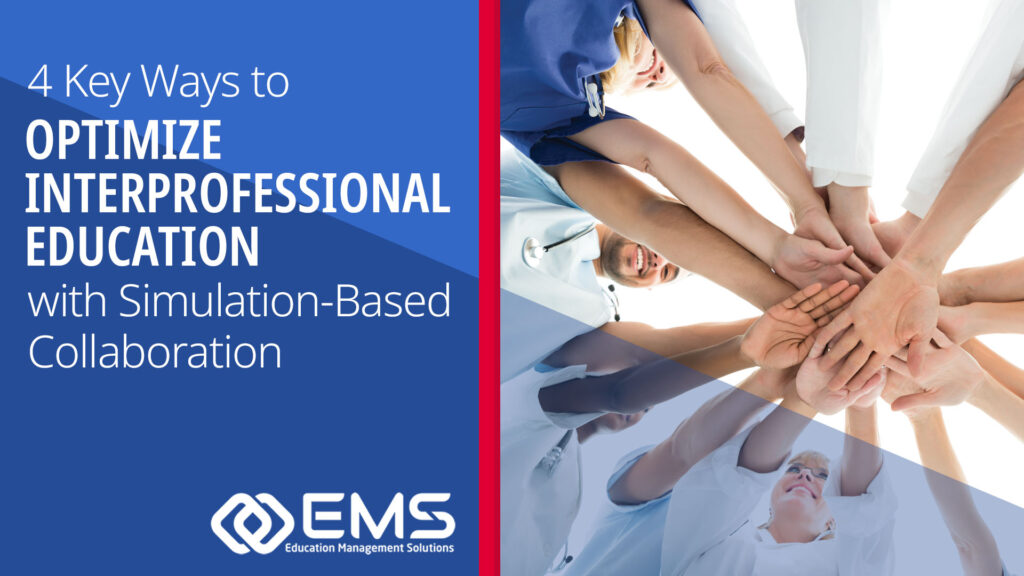Simulation is one of the fastest ways to build the teamwork, communication, and critical group problem solving that interprofessional education (IPE) strives to achieve. When designed and run intentionally, simulation-based collaboration helps learners understand each other’s roles, make safer decisions under pressure, and transfer learned behaviors back to clinical practice.
Here are four practical ways to elevate your IPE outcomes using simulation.
1. Align on Shared Competencies and Assess them Consistently
Map Learning Objectives to Frameworks
Use core competency frameworks (roles/responsibilities, interprofessional communication, teams/teamwork, values/ethics) and align scenarios to specific, observable behaviors.
Co-design Objectives and Rubrics with Faculty from Each Profession
Identify what “good” looks like for nursing, medicine, pharmacy, PT/OT, social work, EMS, and others inside the same team activity.
Standardize Prework
Provide brief primers on roles, scope of practice, and shared tools so team behaviors are assessable, not accidental.
2. Engineer Team-centered Scenarios that Require Collaboration
Start with Problems that Demand Multiple Professions
Examples: sepsis activation (ED + ICU + pharmacy), postpartum hemorrhage (L&D + anesthesia + blood bank), complex discharge planning (medicine + nursing + pharmacy + social work + PT/OT).
Build in Authentic Role Dependencies
Add timed decision points and information that only certain roles possess so collaboration is the path to success.
Include the Patient and Family Perspective
Use standardized patients or video inserts to keep person-centered care central to team decisions.
3. Debrief for Team Learning, Not Just Clinical Correctness
Co-facilitate with an Interprofessional Pair
Having faculty participation from different disciplines can surface assumptions and model collaborative behaviors for learners.
Leverage Video for Specific Moments
Bookmark clips that show a handoff, escalation, or role clarity issue and review them to anchor reflection in observable behavior.
End with Commitments to Action
Capture one to two team-level “do differently next time” items and relate them to clinical workflows.
4. Make it Operational: Schedule, Measure, and Scale
Coordinate Logistics Across Programs
Use shared calendars, automated scheduling, and resource optimization to mix professions without overloading faculty, rooms, or equipment.
Standardize Assets
Maintain a common library of scenarios, role cards, checklists, and debrief guides so experiences are consistent across campuses and cohorts.
Offer Flexible Delivery
Blend center-based, in-situ, and virtual/telesimulation to reach remote learners and align with clinical realities.
Measure what Matters
Track utilization, attendance by profession, checklist adherence, and team performance scores; connect those data to course grades, readiness for practice, and quality/safety indicators where possible.
IPE Simulation Elevates Patient Care
By aligning on shared competencies, designing team-centered scenarios, debriefing for collaboration, and operationalizing at scale, you’ll turn simulation-based collaboration into a reliable engine for interprofessional learning.
To discuss how EMS can help you start small, measure consistently, and iterate your simulation program, contact us today.

